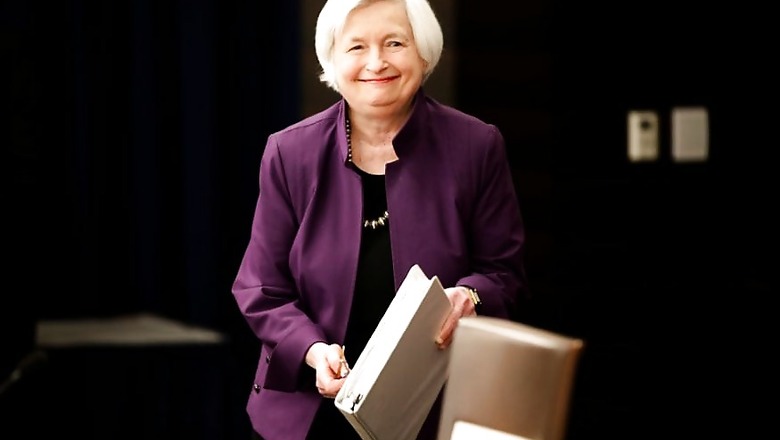
views
New Delhi: The US Federal Reserve raised short-term interest rates on Wednesday night and unveiled a roadmap to reduce its mammoth bond portfolio of $4.5 trillion.
What does that mean?
It means that the Federal Reserve is more confident about the American economy and has thus raised interest rates, after a regime where they were at historically low levels for nine years, following the economic crash of 2008. In these 9 years the Federal Reserve also purchased bonds (debt instruments) worth $4.5 trillion to prop up the economy
How do these economic tools work?
After the 2008 crash, investment and spending by businesses and households in the US froze as confidence in the economy plummeted. Slashing interest rates or the cost of borrowing money, to near zero levels was a way to encourage bank borrowing for the purpose of kick-starting the economy
Did it work?
No. To the dismay of American policymakers, record low-interest rates failed to revive the economy. So the Fed embarked on quantitative easing. Forget the jargon, it basically meant buying IOUs from banks. The resulting money that the banks got in exchange for the bonds they sold to the Federal Reserve was supposed to flood the market with money and reduce interest rates even further, to induce businesses to start borrowing. In the process, the Fed ended up owning $4.5 trillion of bonds.
So how does some decision by the Fed in the US affect me in India?
As the old saying goes “whenever the Fed sneezes the world catches a cold”. The American economy is the largest in the world, the US Dollar is the world’s reserve currency and therefore a change in American interest rates has a ripple effect on all economies.
US treasuries are considered to be the gold standard for investors, as they are risk-free and give assured returns. The interest rate of US Treasuries is the same as short-term interest rates. Since they have hovered near zero for the past decade, it didn’t make sense for investors to put their money in them. They instead bought high-yielding securities in other countries, including Indian bonds, where the returns were higher.
Over the past 10 years if you purchased a 10-year United States Treasury bond it would have yielded a 2% to 2.3% nominal return. Inflation over the same period has been 1% or more, so your real return on your investment would be 0.5% to 1%.
If you had instead purchased an Indian 10-year bond, you would have got a minimum return of 6% and at times as much as 9%. You, dear reader, do the maths.
What happens now?
Right now, not much, since the Fed has raised interest rates just a little. It’s not enough to effect Indian interest rates, since the differential between US and Indian rates is still high enough for investors not to dump Indian securities and start buying American treasuries. However, in the future, as the Fed raises its rates more, investors will start taking that call and that’s where things for the Indian economy will start getting trickier.
How so?
As investors start abandoning risky Indian bonds for safe US treasuries, money will start flooding out of India. This will mean that the Indian rupee will depreciate against the American dollar, making imports more expensive. It will also raise Indian interest rates, which means that car loans, home loans and basically any money you borrow from the bank will get more expensive.














Comments
0 comment